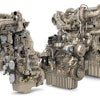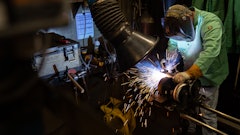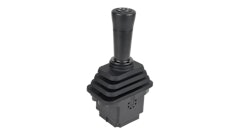In August of 2001, Suzuki and Kawasaki announced their intent to form a product-development alliance for recreational products. The official reasons given by the companies at that time were to "bolster [the] growth and competitiveness" of both organizations. Confronted with ever-increasing component costs, new competitors from China and Taiwan , and an increasingly unfavorable exchange rate, formation of an alliance was a very logical thing to do.
The initial plan was to focus on high-volume models and the companies anticipated three key benefits:
1. Production platforms for motorcycles and ATVs could be shared, and capacity allocated at plants to meet demand for the new products.
2. Suzuki and Kawasaki could share parts sourcing to help both companies remain competitive in the global marketplace by reducing purchasing costs.
3. Suzuki and Kawasaki could co-develop future motorcycle and ATV models to fill product line gaps and create new sales opportunities.
The points outlined above were rather vague, and at the time of announcement were subject to a lot of industry interpretation and speculation. Neither company ever really said why they needed to form this alliance. The recreational products divisions of Kawasaki and Suzuki are parts of larger industrial conglomerates, and neither Kawasaki nor Suzuki was officially claiming to be in a particularly weak financial position. Indeed, both companies played the alliance deal very "close to the vest."
Now, almost four years later, Suzuki and Kawasaki have announced that they will dramatically alter the terms of the alliance agreement. According to news releases, Kawasaki and Suzuki say the alliance will now focus on potential exchanges of indirect resources, rather than on direct OEM product exchanges. In short, they plan to limit the alliance agreement to a sourcing strategy only, and this represents a dramatic shift.
Our review of each company's financial statements indicates that Kawasaki had the most to gain from an alliance arrangement. Back in 2001, Kawasaki 's core industrial businesses were struggling under a slowing Japanese economy, and the strengthening yen/dollar exchange rate was crimping overall profitability.
Looking to cut costs, the company clearly viewed its high profile (yet relatively small --; it accounts for only about 3% of parent Kawasaki Heavy Industry's [KHI] total revenue) recreational product division as a place to achieve these cost reductions. Sharing development costs and resources with Suzuki Motor Corp. (SMC) would be a measure that would benefit the KHI conglomerate at large.
At the early stages of the alliance, some benefits for both Suzuki and Kawasaki were becoming more clear. Suzuki finally would have an opportunity to improve its weak cruiser bike range, and might be able to replace models using Kawasaki 's engine technology for a fraction of what it would cost to do this on its own. Suzuki would also have access to Kawasaki 's ATV technology, especially its automatic transmissions, which are popular in the American ATV market.
Kawasaki would get several key benefits from the alliance, as well. In the early part of this decade, Kawasaki was struggling to keep up with the R&D expenditures of larger rivals Honda, Yamaha, and Suzuki. The Kawasaki sport bikes were not up to the standards of competitors' bikes, and the company was slower than competitors to adopt necessary performance upgrades. This product development alliance was intended to enable the Kawasaki brand to regain a competitive stature while still maintaining a reduced level of investment by the corporate parent.
On the product side, the Kawasaki–Suzuki alliance had very tangible benefits in the showroom. There were weaknesses in each OEM's lineup, and the alliance was structured to address specific segments:
Dual-purpose bikes : In 2001, Kawasaki needed a dual-purpose bike to fill out its product lineup alongside the decade-old KLR650, and Suzuki provided a rebadged bike. However, these are typically low-volume products, so in my opinion it's a rather odd product to use in the alliance. On the other hand, Kawasaki also received (briefly) a version of the Suzuki V-Strom 650 adventure bike, a bike that is very capable and well-positioned in the current U.S. market.
Dirt bikes : The Kawasaki 110 is a high-volume product, and it was a smart move for Suzuki to borrow a product in this size range to fill out its lineup. The shared four-stroke 250cc dirt bike was also a good opportunity to share resources, since most of the major components were "on the shelf." The 250cc four-stroke MX bike which was co-developed and introduced in 2003 was indicative of the ultimate direction the alliance was intended to take. This product incorporated a well-engineered engine from Suzuki, mated to an accommodating chassis from Kawasaki and the bike is built in Kawasaki 's production facility. A neat product that appeared to use the best of each OEM's available resources
ATVs : Kawasaki is building a version of its Prairie 700 for Suzuki at the Kawasaki factory in Lincoln , NE. This is the first product from the alliance that is manufactured in North America .
Cruisers : Suzuki has had a weak lineup in the U.S. cruiser market for several years ---; some products have not been significantly improved since the 1980s. But the shared 1600 Mean Streak/Boulevard M95 is an example of how the alliance can help fill that gap. Cruisers are a key product in the U.S. market, and Suzuki obtained a jump-start for its lineup by joining forces with Kawasaki here. Introduction of additional models based on Kawasaki V-twin engines will likely continue to fill out Suzuki's cruiser line, and the "Boulevard" brand appears to be gaining traction.
Utility vehicles : The Kawasaki Mule is a well-designed and hot-selling vehicle, and a version badged as a Suzuki provided Suzuki dealers a much-needed product for this essential market. However, from the beginning, this co-branded machine was considered by many to be a "stopgap" measure to give Suzuki time to develop its own proprietary product.
As the alliance approached its fourth year, the larger effects were being felt and it helps us interpret the true reason for the formation of the agreement.
Most industry observers believe that alliance is another term for badge engineering, a strategy that allows the two companies to develop and produce complimentary products that can fill gaps in each others' product lineups. In addition, despite both companies being part of a larger conglomerate, neither recreational product division appears to have a large pool of R&D resources at its disposal. In fact the combined total R&D expenditure of Kawasaki and Suzuki for 2004 is smaller than that of singular rivals Harley -Davidson or Yamaha. But let's face it --; the ultimate goal of R&D isn't to spend money. The goal of manufacturers is to develop excellent products at an optimal cost. Sharing resources enables these OEMs to put well-developed product in the showrooms and offer something for everyone, as long as both parties feel that they are getting their fair share of benefits.
However, now that the development alliance is ending, it raises some big, recurring questions:
Question 1: What happened? Why is the alliance dissolving?
Here's the official line: "Over these three years, we investigated many factors such as profitability, sales volume, customer reaction, influence on brand images, competitiveness of each OEM product," Suzuki said in a statement sent to dealers. "After much discussion followed by careful investigation, we have decided to discontinue the sale of these OEM products. Discontinuing the OEM products business gives us the opportunity to focus on developing Suzuki's own-design product with Suzuki character and brand image."
"Achieving significant savings in development resources was a primary goal of the relationship with SMC, and having done that, KHI is in a stronger position for investment spending against future product introductions," Kawasaki said in its statement. Both companies say the alliance will be reviewed on a regular basis.
Other reports hint at behind-the-scenes troubles. Cycle World published a report that a rift occurred which coincided with the development of the 2006 KX250F motocross bike.
Question 2: Which segments will feel the most strain from dissolution of the alliance?
Both Kawasaki and Suzuki made it clear from the outset that they intended to keep their high-profile sportbike lineups independent. The Suzuki GSX-R bikes and the Kawasaki ZX bikes offer a strong brand identity, and we did not expect either manufacturer to risk dilution of these brands.
Now, as the alliance is restructured, it has been made official that for the 2007 model year, Kawasaki will not offer the KLX125A/B; KSF80A; KSF50A; and KDX50A dirt bikes. The KSF400A will still be produced for model year 2007. On the Suzuki side for 2006, the RM65; DR-Z110; LT-V700F; M95; and the QUV products will be discontinued. The RM-Z250 will reportedly be produced for 2006. News releases indicate that since the RM-Z250 is a jointly developed unit, Suzuki and Kawasaki may introduce their own versions of this model with features not being commonly used on both the Suzuki and Kawasaki models.
To say that it is important to have good cruiser product in the United States is a major understatement. An OEM in North America needs a broad line of cruisers: power cruisers, sport cruisers, mid-displacement cruisers, small cruisers, and touring cruisers. For years, Suzuki had the weakest cruiser lineup in the U.S. market, but the Kawasaki alliance and the new "Boulevard" branding effort were reviving the Suzuki cruiser showrooms. The loss of the Suzuki M95 (a.k.a. the Kawasaki Mean Streak) will require Suzuki to work quickly to replace it with a large-displacement cruiser of its own design.
The exchange of off-road bikes, ATVs, scooters, and cruisers posed less of a brand risk to the two manufacturers than did the exchange of sportbike technology. The companies were even comfortable enough with the alliance arrangement to allow the sale of the DVX400 from Arctic Cat --; simply a rebadged version of the jointly marketed 400cc sport quad shared by Kawasaki and Suzuki. As the alliance between Kawasaki and Suzuki unravels, it certainly casts doubt on the future of the Cat DVX400.
To bridge the gaps caused by the dissolution of the alliance, Kawasaki will be working to develop models for its off-road portfolio, while Suzuki must be feeling pressure to improve and expand its newly rejuvenated Boulevard cruiser lineup. While these are formidable challenges, both Kawasaki and Suzuki are now preparing to tackle them independently. We expect the results of these efforts to appear in showrooms within the next 18 months.
Peter Gantriis is president of RPM Research, a market research and consulting company that specializes in the powersports and automotive industries. Peter can be reached at (651) 493-3600, or by e-mail at [email protected].















